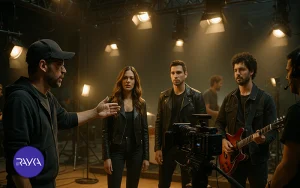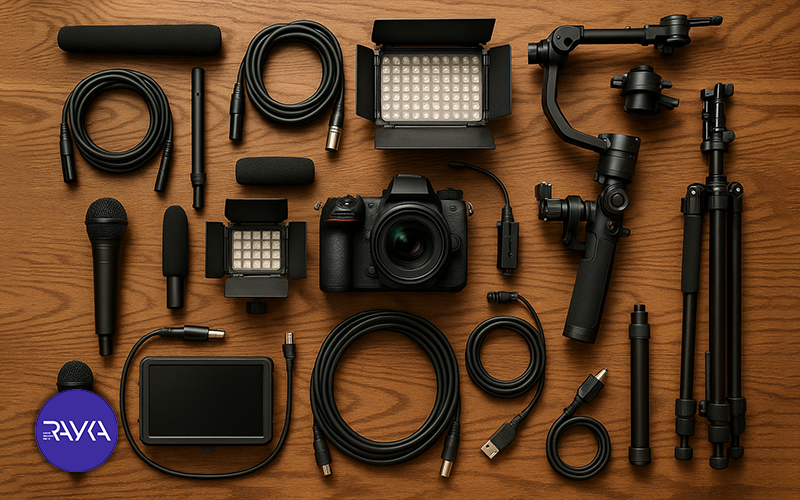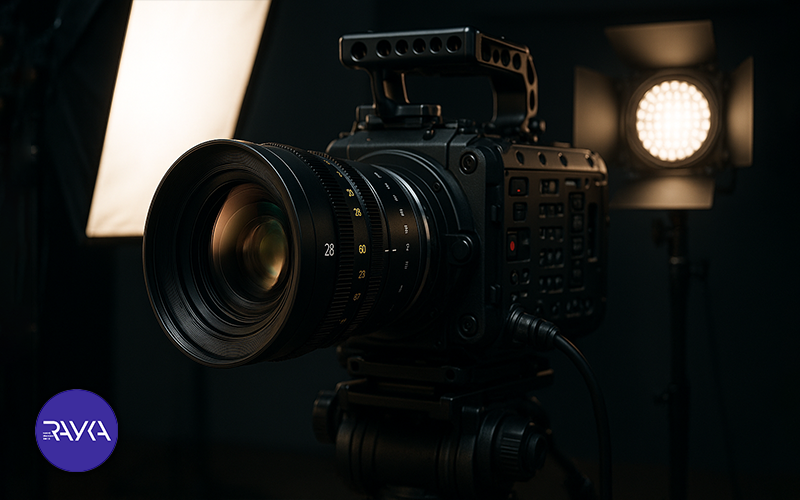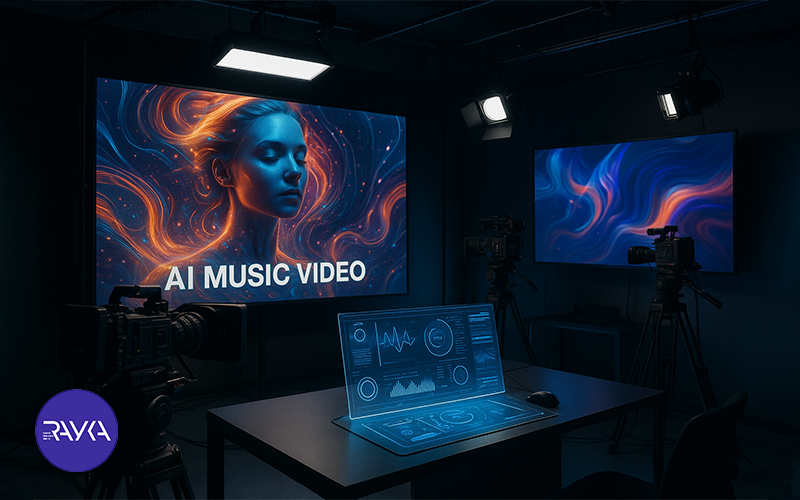
In today’s world, music videos are recognized as powerful tools for connecting with audiences and enhancing an artist’s brand. Creating a professional music video requires careful planning and attention to detail at every stage.
Since their emergence in the 1980s, music videos have become a core part of the music industry. They not only help promote songs but also convey the artist’s personality and messages to the audience. This article examines the key tips for creating a professional music video, enabling artists and content creators to produce high-quality, impactful videos using this guide.
Before filming, designing the concept and storyline of the video is essential to ensure professional execution in later stages.
Conceptualization and planning are the foundation of every successful music video. At this stage, artists and content producers should analyze the song, design the story and scenes, and define the video’s main message and goal. This process ensures the production is coordinated and of high quality.
Analyzing the song helps create scenes that are in sync with the music.
Song analysis includes reviewing the lyrics, tempo, rhythm, and emotions. This step identifies which scenes and actor movements best align with the music and effectively convey the song’s message. Thorough knowledge of the song contributes to producing a professional and engaging music video.
A storyboard outlines the visual path and sequence of scenes.
A storyboard is a tool for visually designing scenes and their order. Using AI enables the creation of precise, fast, and creative storyboards, reducing production time and cost. This step ensures the production team has a clear vision of the video before filming.
Clarifying the video’s message and goal aligns all elements.
Before production, the main message and goal must be established. This ensures that all elements; including visuals, lighting, actors, and special effects; are aligned with the final objective, making the video professional and impactful. Without a clear message, the video may appear aimless or incomplete.
Pre-production is the preparation phase for filming and includes locations, equipment, and crew selection.
Pre-production forms the foundation of a professional production. During this stage, all details are planned before filming to prevent issues during production. Selecting appropriate locations, preparing equipment, and defining roles save time and cost while ensuring team coordination.
The filming location should match the theme and style of the music video.
Choosing the right location greatly affects the video’s mood. The location must align with the song’s theme and message and provide necessary filming facilities. Checking natural light, ambient sounds, and equipment accessibility beforehand is essential for smooth production.
The right tools ensure image and sound quality and a professional production process.
Using professional equipment allows for high-quality image and sound capture and facilitates adding special effects later. Planning for the required equipment prevents extra costs and wasted time and prepares the team for any scene. Key equipment includes:

Assigning roles and choosing suitable individuals ensures production quality.
Casting involves defining roles, selecting the main actor, and assembling the technical team. Actors should fit the song’s style and video message, and the crew must have the expertise to execute filming and lighting precisely. Proper collaboration between pre-production, production, and post-production teams ensures smooth workflow.
The production stage includes filming, lighting, and sound recording, shaping the final video quality.
This stage transforms prior ideas and plans into visuals and audio. Proper execution of filming, lighting, and sound techniques ensures the music video is professional and aligned with the song and message. Coordination between the director, actors, and technical team is crucial.
Professional filming is the foundation of image quality and video appeal.
Filming involves choosing angles, camera movement, and scene framing. Using proper techniques and varied shots increases visual dynamics and engagement. Aligning filming with the storyboard and song rhythm enhances the video’s impact.
The background should match the video’s theme and message.
A suitable background highlights the main subject and focuses the viewer’s attention. A cluttered or messy background can reduce the video’s impact, so careful design and selection are essential.
Choosing the right lens and angle determines visual depth and storytelling.
Different lenses are used for close-ups, wide shots, or creative perspectives. Correct lens choice creates a professional, engaging image and reinforces the video’s mood. Varied angles (close-ups, wide, high, or low) add visual diversity and movement. Camera angles must match the song rhythm and scene content for maximum impact.
Applying the rule of thirds makes video composition more professional.
This rule positions key elements at golden points in the frame, naturally guiding the viewer’s focus. Adhering to it results in a balanced, professional, and visually appealing video.
Proper lighting sets the mood and enhances image quality.
Professional lighting creates the desired atmosphere for each scene. Using various lights, reflectors, and controlling light intensity allows cinematic and engaging footage. Key lighting principles include:

Accurate sound recording ensures synchronization with visuals.
High-quality audio recording synchronized with visuals conveys the song’s true emotion. Professional microphones, noise removal, and sound adjustment create an engaging music video experience.
Post-production is the final editing phase where visual and audio effects are added, shaping the final video quality.
During post-production, recorded footage and audio are transformed into a professional and engaging music video. Editing, visual effects, color correction, and audio synchronization ensure the video meets professional standards and provides a complete sensory experience.
Editing arranges scenes cohesively, setting the video’s rhythm.
Editing involves cutting shots, arranging scenes, and synchronizing with the song’s rhythm. It ensures a smooth, engaging narrative and keeps the audience’s attention throughout. Key considerations include:
AI-powered effects enhance video creativity and appeal.
AI allows producers to create complex visual and audio effects without heavy equipment or traditional software. AI can enhance shots, optimize movements and colors, and generate unique visuals, increasing video impact while saving time and cost.
Adjusting colors ensures visual harmony and strengthens video impact.
Color correction aligns colors and contrast with the song’s mood, making the video professional, cohesive, and visually appealing.

Rayka Mah leverages AI to produce high-quality, creative music videos quickly.
Rayka Mah provides a full suite of professional services, including creative storyboard design, precise editing, professional lighting and color correction, and adding visual and audio effects. AI enables unique music videos aligned with the song’s style and message without heavy equipment or large teams. The team can simulate shots and create creative visual effects, making videos engaging, professional, and viral-ready. This allows artists to produce high-quality, impactful content in minimal time, experiencing professional music video production with AI.
Creating a professional music video requires attention to key points at every stage—from conceptualization and pre-production to production and post-production. Focusing on song analysis, storyboard design, location and equipment selection, professional filming and lighting, accurate sound recording, synchronized editing, special effects, and color correction all directly impact the final video quality.
Using AI tools, especially Rayka Mah’s services, makes this process faster, more precise, and more creative, enabling the production of professional and engaging music videos. For further learning and skill improvement, educational resources and specialized courses are recommended to help artists and content creators produce impactful, professional music videos.